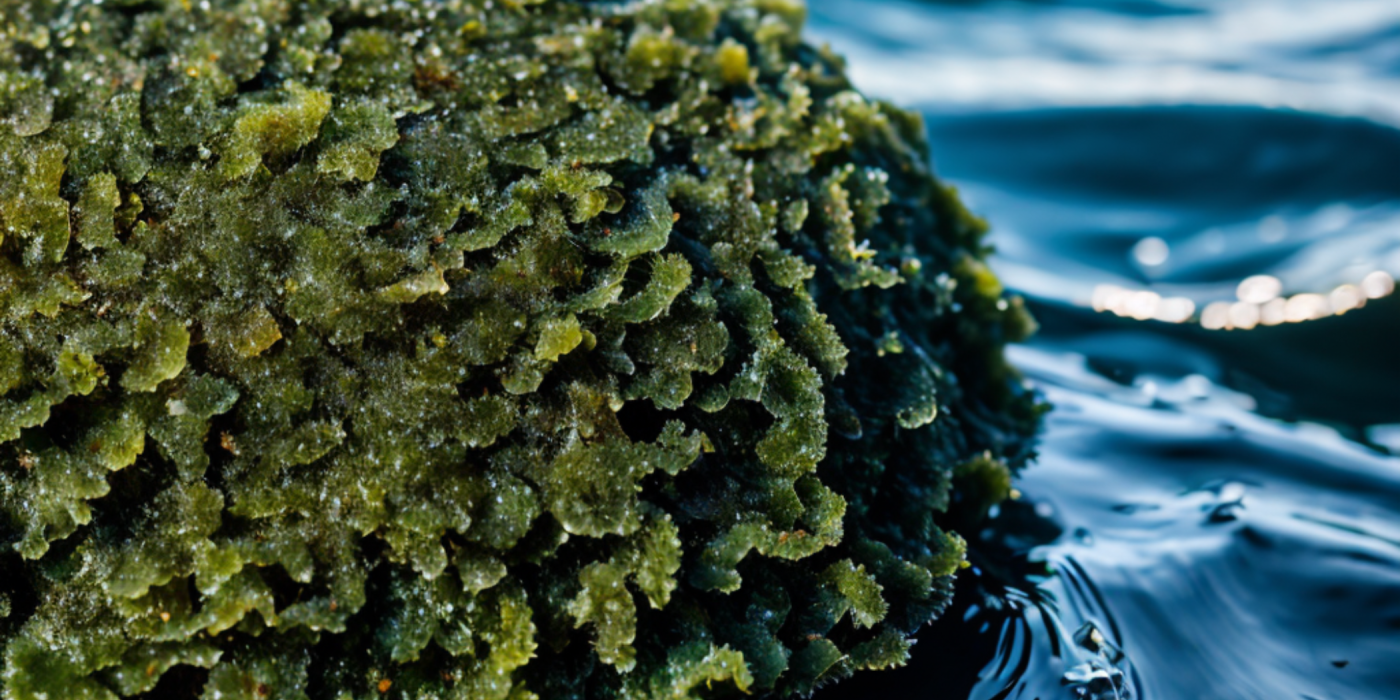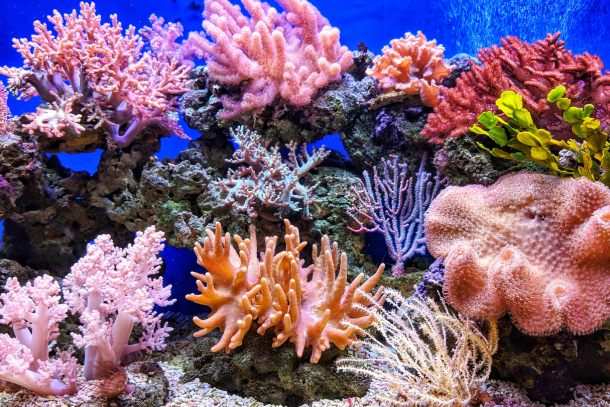The Seaweed Blob 2023: An Ecological Phenomenon Explained

The 2023 Seaweed Blob refers to the vast mat of seaweed that has unexpectedly bloomed in the world's oceans. These extensive 'rafts' of seaweed, spanning several kilometres, have appeared suddenly, posing challenges to both marine ecosystems and coastal communities. The 'blobs' are composed predominantly of a type of macroalgae known as 'Sargassum,' which, although commonplace in certain regions, have never proliferated at such an alarming rate before.
In this piece, we aim to delve into the intricacies of this intriguing event, seeking to provide a comprehensive, factual, and engaging account of the Seaweed Blob 2023. Our objective is twofold: firstly, to educate our readers on the nature of seaweed blooms, with a specific focus on the 2023 event. Secondly, we intend to present the current scientific understanding and hypotheses concerning the causes and implications of this phenomenon. We hope that by bringing attention to this ecological event, we can contribute to the ongoing discourse surrounding environmental change and its implications on our planet.
Understanding Seaweed Blobs
What are Seaweed Blobs?
To put it simply, seaweed blobs, more commonly known as 'macroalgal blooms' in scientific parlance, are unusually large aggregations of certain types of seaweed. These can extend across vast swathes of the ocean and often get washed ashore, creating an unusual sight on our coastlines. This phenomenon is predominantly driven by the overgrowth of one or a few seaweed species, typically caused by an excess of nutrients in the water or changes in oceanic conditions.
Historical Perspective on Seaweed Blobs
Historically, these events have occurred periodically across the globe. One of the most notable cases is the 'Great Atlantic Sargassum Belt' detected in 2011. It extended from the West Coast of Africa to the Gulf of Mexico, an unprecedented event at the time. Since then, annual Sargassum blooms have been a persistent occurrence, with some years being particularly severe. This brings us to the peculiar case of the Seaweed Blob 2023, which has outmatched its predecessors in both size and impact.
The Importance of Seaweed
Despite the occasional problems caused by large-scale seaweed blooms, it's crucial to understand the ecological and environmental significance of seaweed. Seaweeds form the foundation of many marine ecosystems, providing shelter and sustenance to a myriad of marine creatures. Moreover, they play a pivotal role in carbon sequestration, thereby helping to mitigate the impacts of climate change. Understanding this delicate balance between the constructive role of seaweeds and the potential issues caused by their overgrowth is essential to address the phenomenon of seaweed blobs effectively.
Unravelling the Seaweed Blob 2023
Dense, green, and ever-mysterious, the seaweed blob of 2023 has become a hot topic in both scientific and public spheres. So, let's dive in to understand this intriguing marine event.
A Detailed Account of the Seaweed Blob 2023
In early 2023, a colossal bloom of seaweed made headlines, stretching from the shores of the Caribbean to the tip of the South Atlantic. Dubbed the 'Seaweed Blob 2023', this vast expanse of Sargassum algae was unprecedented in its size and density, making it a phenomenon of great interest.
Data, Pictures, and Firsthand Experiences
Measurements taken from satellite imagery revealed the astonishing size of the bloom, estimated to be several thousand square kilometres. These images painted a vivid picture of the seemingly endless expanse of seaweed, providing a stark visual indicator of this marine event.
Firsthand experiences from local communities and travellers reported drastic changes in the seascape, with once-clear waters now dense with floating algae. Sightings of trapped sea creatures and the strong, rotting smell of decomposing seaweed further illustrated the tangible reality of this occurrence.
Impact on Marine Life and Coastal Communities
The ecological and societal implications of the Seaweed Blob 2023 have been profound. From an ecological perspective, while Sargassum provides a vital habitat for some marine species, the sheer density of this bloom has created hypoxic conditions, causing a significant die-off of local fish and other marine species.
On a societal level, coastal communities have faced considerable challenges. Fishing industries have been hit hard by the decline in fish populations, while the tourism industry grapples with unsightly beaches and the unpleasant smell. Despite cleanup efforts, the scale of the Seaweed Blob 2023 continues to pose severe challenges for these communities.
The Science Behind the 2023 Seaweed Phenomenon
Unravelling the complexities of the seaweed bloom phenomenon is crucial in understanding its environmental implications. This section will delve into the scientific principles behind the Seaweed Blob 2023 and explore the roles of different influencing factors, including climate change.
Understanding the Seaweed Bloom Phenomenon
Seaweed blooms, or 'blobs' as they are often called, are essentially massive growths of seaweed that can blanket large areas of the ocean's surface. They're triggered by a combination of factors, including temperature shifts, nutrient availability, and changes in ocean currents.
The Biology and Growth Factors
Seaweed, like any plant, thrives in conditions with ample sunlight and nutrients. When the right balance of warmth, sunlight, and nutrients - particularly nitrogen and phosphorous - is met, seaweed can grow exponentially, leading to these immense 'blobs'.
Climate Change and Other Factors
Climate change plays a considerable role in the development of seaweed blobs. Rising ocean temperatures and increased nutrient runoff from agriculture and urban areas create perfect conditions for seaweed growth. Moreover, shifts in ocean currents due to changing weather patterns can help to transport and aggregate the seaweed into large 'blobs'.
Expert Opinions and Studies on the 2023 Event
The Seaweed Blob of 2023 has attracted significant attention from the scientific community. Several experts and studies suggest that this event is unprecedented in scale and could serve as a potent symbol of our changing climate. However, research continues to fully understand the breadth and impact of this phenomenon, which is crucial to inform future strategies to mitigate its effects.
Environmental Implications
The Seaweed Blob of 2023 has brought with it a plethora of environmental implications that cannot be overlooked. Its impact ranges from the intricate ecosystem of marine life to direct human activities such as tourism and fishing.
Consequences for Biodiversity
Impact on Marine Life
Under the onslaught of the Seaweed Blob 2023, the delicate balance of biodiversity has been significantly shaken. Dense mats of seaweed not only obstruct light penetration into the water but also considerably lower oxygen levels. This anoxic environment leads to massive die-offs of both plant and animal life beneath the seaweed blanket, disrupting the food chain at multiple levels.
Fish Populations and Coral Reefs
Fish populations are being severely affected, with some species experiencing dramatic population declines due to a scarcity of food and breeding grounds. Simultaneously, coral reefs, often referred to as the "rainforests of the sea," are experiencing a tragic decimation due to the lack of sunlight and oxygen, endangering the numerous species that call these reefs home.
Impact on Human Activities
Effect on Tourism
The Seaweed Blob 2023 has not only upset marine life but also thrown a spanner in the works for coastal tourism. Once pristine beaches are now inundated with rotting seaweed, leading to unpleasant odours and sights. This has deterred tourists, significantly affecting the economies of many seaside towns and resorts.
Fishing Industry Challenges
The fishing industry, too, has borne the brunt of this environmental anomaly. The dramatic decline in fish populations has led to poor catch rates, destabilising the livelihoods of communities dependent on fishing. In many cases, fishing vessels have also been impeded by the extensive seaweed bloom, further complicating the situation.
In essence, the environmental implications of the Seaweed Blob 2023 are far-reaching, affecting both the intricacies of the marine ecosystem and human activities in an unprecedented manner.
Potential Solutions and Mitigation Strategies
As we delve into the vast sphere of managing the ecological puzzle that is the seaweed blob, we find a myriad of current strategies, technological advancements, and policy recommendations in place.
Current Strategies to Manage Seaweed Blobs
The struggle against unruly seaweed blooms has seen varied strategies put into action. These range from manual removal, a labour-intensive but sometimes necessary task, to the employment of eco-friendly machinery designed to harvest the excessive seaweed. Another common approach includes the utilisation of seaweed as a bioresource. By converting the seaweed into biofuel, fertiliser, or animal feed, we're not only tackling the problem but also generating sustainable products.
Technological Innovations and Advancements
Technological ingenuity has always been a cornerstone in overcoming environmental challenges. In this context, innovations such as satellite imaging and AI-driven analysis are used to predict seaweed blooms, allowing us to take pre-emptive action. Additionally, cutting-edge machinery for large-scale seaweed harvesting and conversion processes is being developed, which could significantly enhance our response to future seaweed blobs.
Policy Recommendations and Conservation Efforts
Policy-making has a crucial role in shaping how we respond to seaweed blobs. Implementing regulations that support early detection systems, fund seaweed management projects, and encourage the sustainable use of harvested seaweed could substantially reduce the impact of these events. Moreover, conservation efforts need to be amplified to protect affected marine ecosystems, maintaining their health and diversity while we grapple with the overarching problem of seaweed blobs.
The fight against the Seaweed Blob 2023 and similar phenomena underscores the need for robust solutions, innovative technology, and dynamic policy-making. It's an interdisciplinary struggle where the right blend of science, technology, and governance can make all the difference.
Navigating the Impact of the Seaweed Blob 2023
Reflection on the Seaweed Blob 2023 and Its Implications
The Seaweed Blob 2023 stands as an undeniable testament to our rapidly changing world. Its unforeseen scale and impact have resonated deeply across our marine ecosystems and coastal communities alike. Although, on one hand, the blobs present a rather novel spectacle, they also underline the sheer delicacy of our ecological balance. The vast swathes of seaweed have not only threatened biodiversity but also posed significant challenges to human activities, from tourism to fishing.
The Importance of Continued Research and Monitoring
Whilst this occurrence has sparked a heightened level of scientific curiosity, it further underscores the exigency for sustained research and monitoring. Only through rigorous examination can we begin to understand the full implications of these phenomena. Moreover, research will pave the way for the development of robust strategies to manage the seaweed onslaught effectively. It is vital that we channel resources into understanding these marine events to mitigate their impact on our natural world and local economies.
Final Thoughts on Seaweed Blobs and Their Future
It is increasingly apparent that seaweed blobs may become a recurring aspect of our future. Climate change, amongst other factors, could precipitate more such events in the coming years. Hence, collective action, awareness and preparedness will be instrumental in our response. It is through the confluence of technology, policy intervention, and conservation efforts that we can hope to navigate this challenge and ensure the health and vibrancy of our oceans for generations to come.
Related to this article are the following:
- Water Bottles: The Environmental Impact. How many 16.9 ounce water bottles are in a gallon?
- Everything You Need to Know About Burning Wood in a Fire Pit
- The Fall of the Leaves: A Celebration of Autumn Colours in Britain
- Global Warming Wake-up Call: The Present Impact of Climate Change
- How Does Climate Change Happen and What does Climate Change Effect?
I do hope you have enjoyed this article and hope that you will subscribe to my newsletter so you can get the latest information about all things naturally relaxing.
Stay in touch, join the Naturally Relaxing Newsletter
Newsletter Signup
Post Your Comments
or post as a guest
Be the first to comment.
Latest articles in Nature

Exploring the UK’s Most Serene Coastal Trails

The Healing Power of Nature: Forest Bathing Explained

Sustainable Gardening: Tips for Growing Your Own Herbs

The Yellowstone Supervolcano: A Sleeping Giant

The Lost City of Atlantis: A Geological Mystery






